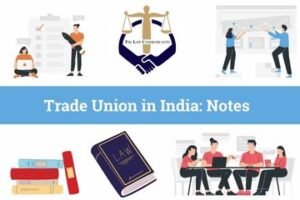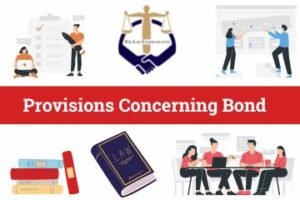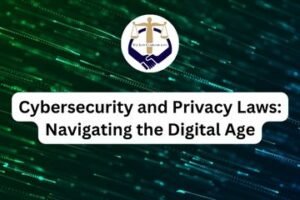When to move Supreme Court vs High Court: maintainability, interim relief odds, and cost-benefit framing
Table of Contents
- Quick answer
- Maintainability: which door opens and when
- Interim relief odds: what actually improves chances
- Cost–benefit framing: time, fees, and strategic value
- Decision tree: Supreme Court vs High Court
- Maintainability checklists
- Playbooks for common scenarios
- Interim relief play: how to present
- Cost–benefit worksheets
- Samples and templates
- Advanced considerations
- Common mistakes
- 7‑day action plan
A Decision framework for choosing whether to move the Supreme Court or a High Court in India in 2025, covering maintainability, interim-relief odds, and cost–benefit framing—with checklists and sample pathways for common disputes. The guidance synthesizes writ jurisdiction under Articles 226/227, Supreme Court routes under Articles 32 and 136 (SLP), forum-discipline precedents, and practical cost/timeline signals.
Quick answer
- Start at the High Court for most first-instance public-law and statutory challenges (Article 226/227), especially where an efficacious alternative remedy exists; writ maintainability is discretionary, but not barred absolutely.
- Approach the Supreme Court directly under Article 32 only for fundamental rights violations needing national uniformity or pan-India relief, or take the appellate/SLP route under Article 136 from a High Court order when a substantial question or grave injustice is shown.
- Interim relief odds track maintainability: courts expect a prima facie jurisdiction/maintainability finding before granting interim protection; if maintainability is contested, odds drop unless the court records satisfaction first.
Maintainability: which door opens and when
High Courts (Articles 226/227)
- Broad writ power “for any other purpose” beyond fundamental rights; reach extends to authorities and private bodies performing public functions; supervisory jurisdiction under 227.
- Alternative remedy rule: not an absolute bar, but a strong self-imposed restraint—writs ordinarily not entertained if a statutory appeal/revision exists, except for lack of jurisdiction, breach of natural justice, or pure constitutional questions.
- Intra-court appeals (letters patent/writ appeals): maintainability varies by statute and the nature of the interim order; not every interim order is appealable.
Supreme Court
- Article 32: direct petition for enforcement of fundamental rights; extraordinary but maintainable when a clear FR violation is alleged.
- Article 136 (SLP): discretionary appellate gateway against any judgment/order from any court/tribunal; not a right of appeal—must show substantial question, jurisdictional error, or grave injustice.
- Forum discipline: successive SLPs or second shots after earlier petitions on same grounds are discouraged; rule-of-law concerns against duplicative filings.
Practical pointer: If a High Court is available and has not been approached, moving the Supreme Court directly (except under clear Article 32 grounds) risks dismissal or a direction to first approach the High Court.
Interim relief odds: what actually improves chances
- Prima facie maintainability first: when maintainability is questioned, courts should record a prima facie view before granting interim orders. Applications that demonstrate clear jurisdiction and writ maintainability see better odds of ad-interim relief.
- Substantial question triggers: in second appeals and similar contexts, High Courts must frame substantial questions of law before granting interim orders; failure may invite reversal.
- Efficacious alternative remedies: if a statutory appeal exists and the petitioner bypasses it without exceptional grounds, interim relief chances shrink.
Tactics to improve odds:
- Show clear jurisdiction: subject-matter and territorial facts, respondent amenable to writ.
- Fit an exception to alternate remedy: lack of jurisdiction, violation of natural justice, or pure questions of law.
- Demonstrate irreparable harm and balance of convenience, but only after establishing maintainability.
Cost–benefit framing: time, fees, and strategic value
Fees and costs
- Supreme Court senior counsel fees often command a premium per appearance; complex SLPs/hearings can cost significantly more than typical High Court matters.
- High Court costs vary by state and subject; some benches run commercial and writ lists at faster clip with lower overall spend than Supreme Court travel and counsel layers.
Timelines and throughput
- High Courts offer first-instance writ relief with potential intra-court appeal; specialized benches (e.g., commercial/IP divisions) can be efficient.
- Supreme Court SLP admission is highly discretionary; many matters see short orders at admission; full relief timeline depends on listing and bench load.
Strategic considerations
- Precedential value: Supreme Court orders set national precedent; use when uniform guidance or pan-India directions are needed.
- Enforcement leverage: Interim orders from either court provide leverage, but repeated interim appeals (e.g., writ appeal against ad-interim) may fail on maintainability.
- Forum-selection clauses: In private/commercial disputes, enforceable forum selection affects High Court choice; Supreme Court respects such clauses in appropriate contexts.
Decision tree: Supreme Court vs High Court
Choose High Court when:
- First-instance public law challenge to state action/regulatory orders; territorial nexus exists.
- Statute provides appeal or revision, and exceptions to alternate remedy are not strong—exhaust remedy first to avoid maintainability hurdles.
- Immediate fact-specific interim relief needed pending departmental tribunals.
Choose Supreme Court when:
- A direct fundamental rights violation requires national-level relief (Article 32).
- After an adverse High Court order (final/interim of significant consequence), SLP under Article 136 with substantial law/jurisdictional issues.
- Conflicting High Court rulings demand uniformity; or pan-India directions are sought.
Maintainability checklists
High Court writ (pre-filing)
- Parties: Respondent amenable to writ (state/authority/public function).
- Territorial jurisdiction: cause of action nexus.
- Alternate remedy: exists? If yes, fit an exception (jurisdictional error, natural justice breach, pure legal issue).
- Locus and delay: petitioner affected; explain delay and laches.
Supreme Court SLP (pre-filing)
- Identify error: substantial question, jurisdictional error, perversity, or grave injustice.
- Exhaustion: prior remedies used; intra-court appeal where applicable; avoid duplicative SLPs.
- Interim need: demonstrate irreparable harm, national importance, or urgency justifying stay.
Playbooks for common scenarios
- Tender/contractual public procurements
- Start with High Court writ; emphasize arbitrariness or malafides; seek expedited hearing; odds of interim restraint improve with transparent scoring errors.
- SLP on adverse orders only if substantial legal questions arise (e.g., blacklisting without hearing).
- Fiscal/tax notices
- Alternate remedy strong; writ maintainability is tight unless jurisdiction/natural justice grounds; High Court first, then statutory appeal; Supreme Court later if substantial questions surface.
- Service and education admissions/exams
- High Court emergency writ for interim seat protection or exam results; Supreme Court SLP only after High Court final/interim of serious prejudice with large cohort impact.
- Regulatory/sectoral (SEBI, TRAI, Competition)
- Often appellate routes exist (SAT, TDSAT, NCLAT); prefer statutory forums; writs limited to jurisdictional/constitutional challenges; Supreme Court at appellate/SLP stage.
- Criminal process quash/anticipatory bail
- High Court under Section 482/BNSS 528 or 438; Supreme Court sparingly after High Court refusal, showing miscarriage of justice.
Interim relief play: how to present
- Lead with maintainability: one page on why writ/SLP lies; cite exceptions to alternate remedy.
- Threshold merits: show prima facie illegality on face (jurisdiction, absence of reasons, breach of natural justice).
- Irreparable harm + balance: quantify harm; show public interest where relevant.
Caution: Appellate challenges to interim orders (writ appeals) may be non-maintainable if relief substantially granted; seek modification before the same bench first.
Cost–benefit worksheets
Worksheet A: Forum suitability
- Relief urgency (1–5), pan-India impact (Y/N), alternate remedy strength (1–5), territorial nexus (Y/N), precedential need (1–5) → score High Court vs Supreme Court.
Worksheet B: Interim odds index
- Maintainability clarity (1–5), exception to alternate remedy (Y/N), record completeness (1–5), harm quantification (1–5).
Worksheet C: Budget and timeline
- Counsel fee bands (HC vs SC), expected listing lag, travel/logistics, potential for intra-court appeal or SLP layering.
Samples and templates
High Court writ synopsis (skeleton)
- Jurisdiction and maintainability; facts; grounds (jurisdictional error, natural justice, proportionality); prayers (main + interim).
SLP synopsis (skeleton)
- Questions of law; substantial question/jurisdictional error; why Article 136 discretion; impugned order errors; interim prayer.
Interim application (both forums)
- Maintainability statement; prima facie case with pinpoint citations; irreparable harm (numbers/dates); balance of convenience; undertakings.
Advanced considerations
- Forum selection clauses: where private contracts fix exclusive jurisdiction, align the High Court choice accordingly; Supreme Court respects such clauses in appropriate disputes.
- Successive challenges: avoid filing another SLP after dismissal on same grounds; courts view this as abuse.
- Mixed relief strategies: sometimes a fast High Court interim order provides immediate protection while reserving SLP on substantial questions later.
Common mistakes
- Bypassing statutory appeals without a clear exception—writ dismissed on maintainability; interim refused.
- Seeking interim orders before laying maintainability foundation—courts now insist on a prima facie maintainability finding.
- Treating SLP as a right of appeal; thin records and fact-reappreciation pleas rarely succeed at admission.
- Filing writ appeals against non-prejudicial interim orders instead of seeking modification below—dismissed for non-maintainability.
7‑day action plan
Day 1–2: Map forum options using Worksheets A–C; collect jurisdiction facts and alternate remedy analysis.
Day 3–4: Draft maintainability-first synopsis; prepare interim application with harm quantification and undertakings.
Day 5: Set hearing note with case law on exceptions to alternate remedy and maintainability–interim link.
Day 6–7: File and press for listing; be ready with modification routes (HC) or admission strategy (SC).
Choosing the right court is a function of maintainability first, then interim prospects, and only then cost and speed. High Courts are the default entry for most disputes; the Supreme Court is the apex forum for constitutional enforcement and exceptional appellate control. Structure the case around jurisdiction and exceptions to alternate remedy to maximize interim odds—and reserve the Supreme Court for questions that truly warrant its scarce discretionary time.




